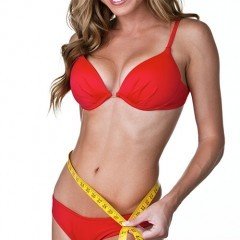Mothers everywhere are feeling the pressure to look like a supermodel weeks after welcoming their child to the world and turn to Mommy Makeovers. Many believe this mind set is due to our pop-culture. For example, Kim Kardashian, someone who is always in the spotlight bounced right back after her first child and was rumored to look even better than before her pregnancy. Dr. Diana Zuckerman, president of the National Research Center for Women & Families, describes this as “the trickledown effect”: “The most beautiful women are getting Mommy Makeovers to look even more beautiful, then having their photographs computer-enhanced, and the rest of us are left saying, ‘Why don’t I look that good?’” We say this with the intent to educate those that aren’t aware of the editing that goes on to make those in the public eye look picture perfect 24/7. It is best for mothers, and all patients, to go into cosmetic surgery with the end goal of increased confidence, self esteem and love for their body, not with the intent to look perfect. To find out the psychology behind women who choose cosmetic surgery after the baby please refer to the information below. Real Self surveyed mothers of all age ranges: 99.5% of them had work done after they had a child (or children) and 85% of them have had more than two kids.
[calltoaction]To learn more about Mommy Makeover Procedures, please contact usat (817) 473-2120 today or email appointments@markbisharamd.com[/calltoaction]

There are seasons for everything, but one thing you wouldn’t expect to be seasonal is cosmetic surgery. Any plastic surgeon, however, will tell you that the spring is the season for breast augmentations and liposuction, and the season for facelifts is right after Christmas. And many other procedures are more common during certain times of the year.
When it comes to facial surgery, like face or eyelid lifts, fall or winter surgery is most common. While you should be able to face the public two weeks after a facelift, you might not really want to. You’ll have residual swelling and even a little bruising up to a month after the lift, and there’s always a chance of some odd lumps and bumps. It’s a lot easier to wear scarves or heavier makeup when it’s cold outside. When planning for cosmetic surgery, you might be pleasantly surprised at how fast you recover, but 5-10% of people have one thing or another that slows down their recovery. When planning out your schedule, you really have to plan for the worst-case scenario.
Recovery from larger procedures takes longer than recovery from smaller procedures. And older women take longer to bounce back than younger ones. And, of course, if you have significant medical problems, you have a much higher chance of a complication after surgery; you and your surgeon may decide to forgo surgery and improve your appearance with less invasive procedures that are less demanding on your body.
While some office procedures like Botox, Xeomin and Fillers, are easier to do and really don’t have seasonality, not all types of procedures are suited for the summer. Chemical peels and some laser treatments require strict avoidance of sun, so unless you live in a cave or are a vampire, you might consider having these treatments during the fall-winter months.
This Information is brought to you courtesy of Dr. Mark Bishara and The Paragon Plastic Surgery & Med Spa in Mansfield and Southlake, TX
Please visit us on our Facebook page at The Paragon Plastic Surgery and Medspa

Surgeons can reshape the appearance of body parts through cosmetic surgery. Some of the most common body parts people want to improve through surgery include:
- Breasts: Increase or reduce the size of breasts or reshape sagging breasts
- Ears: Reduce the size of large ears or set protruding ears back closer to the head
- Eyes: Correct drooping upper eyelids or remove puffy bags below the eyes
- Face: Remove facial wrinkles, creases or acne scars
- Hair: Fill in balding areas with one’s own hair
- Nose: Change the shape of the nose
- Tummy: Flatten the abdomen
Please call the office of Dr. Mark Bishara and The Paragon Plastic Surgery to discuss more about your cosmetic surgery options. Call (817) 473-2120 or visit our website at www.MarkBisharaMD.com.
En Espanol
Los cirujanos pueden formar de nuevo la aparición de las partes del cuerpo a través de la cirugía estética. Algunas de las partes del cuerpo más comunes que las personas quieren mejorar a través de la cirugía incluyen:
Pechos: Aumentar o reducir el tamaño de los pechos o remodelar los senos caídos
Orejas: Reducir el tamaño de las orejas grandes o conjunto orejas prominentes más cerca de la cabeza
Ojos: párpados superiores caídos correctas o eliminar las bolsas debajo de los ojos
Cara: Retire facial arrugas, pliegues o cicatrices de acné
Cabello: Rellena calvo áreas con el propio pelo
Nariz: Cambiar la forma de la nariz
Barriga: aplanar el abdomenPor favor, llame a la oficina del
Dr. Mark Bishara y La Cirugía Plástica Paragon para discutir más sobre sus opciones de cirugía estética. Llame (817) 473-2120 o visite nuestro sitio web en www.MarkBisharaMD.com.
The BotTom line when it comes to an insurer’s decision to pay for plastic surgery is typically whether a procedure is considered medical necessary.
Americans love to look good, but insurers are often reluctant to pay the bills to help us look better.
Last year we spent nearly $11 billion on cosmetic procedures, according to the American Society for Aesthetic Plastic Surgery. Of the more than 10 million procedures performed, the most requested was breast augmentation.
But Cameo Wichinsky, a 42-year-old investment fund manager living in Santa Monica, wants to take her figure in the opposite direction.
Having long lived with the discomfort of breasts large enough to cause shoulder and neck pain and to limit her level of physical activity, she’s ready to go under the knife to reduce her breast size and, she hopes, improve her quality of life.
Despite the fact that she has health insurance, she says she’ll have to shell out the nearly $9,000 for breast reduction surgery, which she has scheduled for November. Her insurer won’t cover the procedure.
“Insurance is a huge hassle,” Wichinsky said.
There was a time when health insurers more readily paid for breast reductions. We tend to think of breast reduction as reconstructive surgery and not cosmetic, even though it has that cosmetic aspect to it.
Plastic surgery is expensive. It’s important to know ahead of time what insurers will pay for.
The line between the desire for improved physical appearance and medical need can be fuzzy in the world of health insurance. Although few people expect to have their health plan pay for their tummy tucks or face lifts, there are procedures that legitimately warrant coverage.
The bottom line when it comes to an insurer’s decision to pay for a procedure is typically whether it’s considered medically necessary, experts say.
“Generally, if a procedure is necessary to repair or preserve the healthy functioning of the body, it’s likely to be medically necessary,” said Carrie McLean, senior manager of customer care with online insurance broker eHealthInsurance.com.
“If the procedure is typically considered standard practice for any given diagnosis, that may also meet the criterion for medically necessary,” she said.
Exactly where that line is drawn depends on the individual and his or her circumstances, not the procedure itself, said Patrick Johnston, president of the California Assn. of Health Plans, which represents 40 health plans insuring more than 21 million Californians.
For example, a middle-aged man interested in a tummy tuck to restore the six-pack of his youth isn’t likely to get much sympathy from his insurer, he said, but it’s a different story for someone who lost 150 pounds after bariatric surgery and is left with excess skin.
“This is a recognized standard of treatment for morbidly obese individuals,” Johnston said.
In the same way, he said, a nose job to correct a deviated septum or surgery to lift drooping eyelids that impair vision are other common surgeries likely to be covered by a health plan.
Consumers have a variety of legal protections that guarantee access to certain cosmetic procedures.
Women who have undergone a mastectomy after a diagnosis of cancer, for example, are guaranteed coverage for reconstructive surgery.
“Both federal and state laws guarantee a woman who has had a mastectomy as a result of breast cancer coverage for breast reconstruction,” Johnston said.
California law also requires insurers to cover the repair of a child’s cleft palate, which includes any medically necessary dental or orthodontic services that are an integral part of reconstructive surgery.
If you’re in the market for a cosmetic procedure, here are some important reminders.
• Check with your insurer in advance. In most cases you’re likely to need your insurer’s pre-authorization to obtain coverage.
It’s a good idea to work with your doctor. Submitting medical records, letters from specialists who have treated you for long-term symptoms and in some cases photos can all lend support for the medical necessity of the procedure and increase your chances of gaining approval.
• Pre-approval may not be enough. Breast reduction surgery such as what Wichinsky plans is a good example of the devil being in the details.
Most insurers dictate how many grams of tissue must be removed from each breast for the procedure to be covered. Asking in advance what those requirements are can help avoid surprise bills.
• You can appeal insurer decisions. Don’t be deterred if your insurer initially denies coverage. You frequently have to appeal the claim … to obtain insurance coverage.
This Information is brought to you courtesy of Dr. Bishara and The Paragon Plastic Surgery & Med Spa
Researchers define the aesthetic characteristics of a beautiful bellybutton
The tiniest of details often set apart merely an acceptable result from one that is truly extraordinary. Researchers in Singapore sought to find specific, definable aesthetic characteristics for reconstructing the umbilicus for patients undergoing abdominoplasty or lipoabdominoplasty. Shu Jin Lee, MD, Yong Loo Lin School of Medicine, National University of Singapore, and colleagues analyzed these aesthetics in their paper “Comuputer-Aided Analysis of the ‘Beautiful’ Umbilicus,” published in this month’s issue of the Aesthetic Surgery Journal.
- Vertical ratio (xiphoid process-lower limit of the pudendal cleft) of 46:54
- Midline horizontal position
- Length equaling 5% of that of the xiphoid process to the lower limit of the pudendal cleft
- Oval shape
- No hooding (29.8%) or superior hooding (21.6%)
Tummy Tucks and Belly Buttons
The appearance of a patient’s belly button can sometimes be significantly altered when they undergo a surgical procedure such as a tummy tuck. A large belly button might have blended in perfectly with a larger overall tummy, but such may not be the case after sculpting has occurred. When a tummy tuck is performed and excess fat is eradicated and skin is pulled back to create a more sleek appearance, the belly button can become more pronounced. Many surgeons anticipate this occurrence and arrange to include a belly button revision as a normal part of all stomach sculpting procedures. If a mismatch of belly buttons and tummy shapes is not noted until after the fact, an umbilicoplasty can then be performed with relative ease to match the size and shape of belly button to stomach.
The authors conclude that these parameters can help in planning the “ideal position, shape, and size of the umbilicus [and] can be useful for achieving successful reconstruction of the umbilicus during abdominoplasty and lipoabdominoplasty.”
This News Brought to You Courtesy of Dr. Bishara and The Paragon Plastic Surgery & Med Spa



